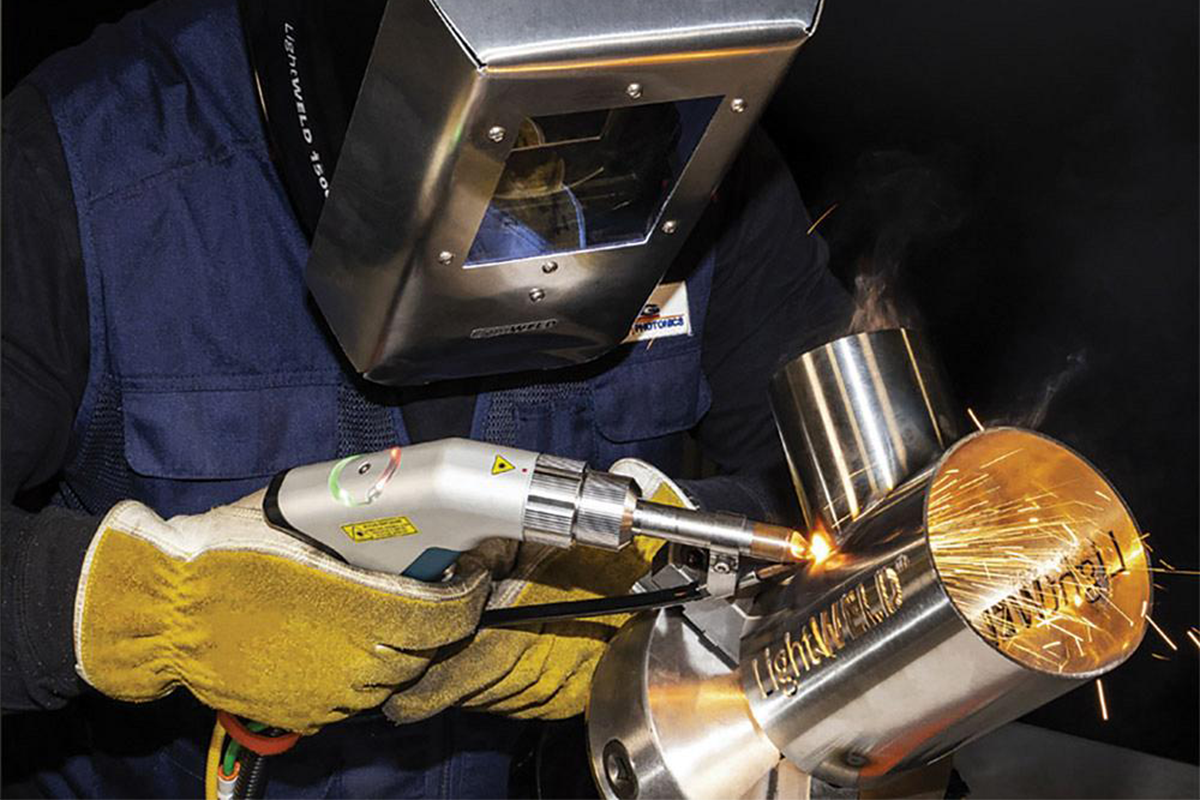HERA would like to make our members and wider metals industry aware of potential safety concerns pertaining to the use of hand-held laser welding devices.
While laser cutting has been widely used by the metals industry alongside conventional cutting techniques, laser welding was largely used as a supplementary process utilising the same platform that includes the use of enclosed cutting/welding areas with laser light protective screens and integrated fume extraction systems.
With the advances in laser technologies, more hand-held laser devices can be seen on the workshop floor. These devices offer a remarkable level of flexibility compared with traditional industrial robotics systems and increased capability in welding performance.
They are largely used in the field of sheet metal and stainless steel applications. Modern hand-held laser devices can have a power output comparable to the lasers integrated into the industrial units. In the same way as industrial lasers, they are classified as a Class 4 laser product under AS/NZS IEC 60825.1 Safety of laser products – Part 1.
Concerningly in some instances, hand-held lasers can be seen being used on the shop floor next to conventional welding and other workstations. These lasers emit 1-µm-wavelength invisible laser radiation, which may be reflected beyond the welding area. In the worst-case scenario, it can cause burns and permanent blindness on unprotected personnel who may be directly or indirectly exposed to laser radiation.
Actions to address safety concerns
The main mitigation for this hazard is to create a laser-controlled area so the risk to other staff is minimised. Welders and personnel performing laser welding should wear clothing designed for welding that covers all exposed skin. Laser safety glasses designed for the wavelength of laser light in use must be worn at all times including under the welding helmet incorporating a laser-resistant face shield alongside adequate fume extraction.
Hand-held laser welding should only be conducted in a fully enclosed absorptive booth designed for laser welding, or in areas that prevent direct and indirect beam exposure including by reflection.
Businesses deploying these technologies are responsible for conducting a corresponding hazard assessment and putting adequate control measures in place to mitigate the exposure of welders and personnel to direct and reflected laser radiation and other hazards.
Need more information?
Please refer to the following documents below:
- Health and Safety at Work Act 2015
- AS/NZS IEC 60825.1: Safety of laser products – Part 1: Equipment classification and requirements
- AS/NZS 1336: Eye and face protection – Guidelines
- AS/NZS 1337.4: Eye and face protection – Part 4: Filters and eye protectors against laser radiation (laser eye-protectors)
- AS/NZS 1337.5: Eye and face protection – Part 5: Eye protectors for adjustment work on lasers and laser systems (laser adjustment eye-protectors)
- AS/NZS IEC 60825.14: Safety of laser products, Part 14: A user’s guide

